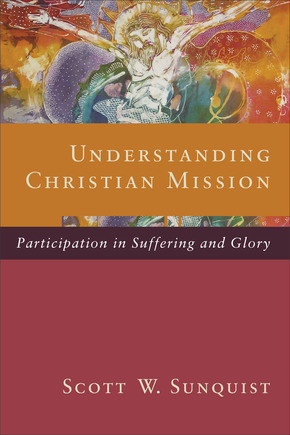Like fires, ideas come about by rubbing two things together. Scott Sunquist’s Understanding Christian Mission: Participation in Suffering and Glory brings a standard contemporary account of missiology (the study of Christian mission) into contact with a gestalt of themes associated with Eastern Orthodox Christianity. The flint here includes a cosmic scope to salvation history, liturgical emphasis on doxology, witness of the martyrs, and the kind of eschatological vista, à la Revelation 7, that one might find in a writer like Alexander Schmemann.
 Understanding Christian Mission Understanding Christian MissionParticipation in Suffering and Glory By Scott W. Sunquist. Baker Academic. Pp. 464. $34.99 |
The book is organized in relation to these themes, around the twin poles of suffering and glory. Along the way the treatment of questions like salvation is influenced, perhaps more subtly, by traditional approaches like the harrowing of hell or the human being as microcosm. How many Protestant missiologists reach repeatedly for Ephrem the Syrian to illustrate the spirituality of mission, or speak of mission’s end as glory in its “Eucharistic splendor” (p. 205)?
The book aims to be a comprehensive introduction to the study of mission, and as such moves through the usual sections of historical survey, biblical foundation, and contemporary and more practical topics such as holism and urbanization. The similarity to David Bosch’s magisterial Transforming Mission is demonstrable. The concept of the missio Dei has become standard in missiological treatments, and so guides the treatment throughout.
In this regard, I appreciated Sunquist’s awareness of how the concept has been misused in the recent history of missiology. He stresses that the reality of human sinfulness should not be obscured in missio’s shadow, and that the persons of the Trinity always work in concert throughout salvation history. He wisely roots suffering and glory in the cross itself.
Unlike comparable introductions, Sunquist’s gives more space to pneumatology, not least because of the dramatic Pentecostal dimension to modern mission. He deals with the central questions of culture and other religions under the rubric of the Holy Spirit. With respect to the former he cites Pope Gregory’s famous advice (in Bede) to missionaries among the Saxons to destroy the idols and redeploy the temples; he leaves the relation of continuity and discontinuity there.
The original motive for the missio was to shift the focus from us to God, and in so doing to fix our eyes on the final horizon in a hopeful way. The move sometimes lost its way in the intricacies of trinitarianism and our own desires. The same good purposes are served by organizing missiological reflection around glory, and so the theme proves in Sunquist’s book to be an apt and helpful framework to present this inherently multi-disciplinary pursuit.
The Very Rev. George R. Sumner
Toronto
TLC on Facebook ¶ TLC on Twitter ¶ TLC’s feed ¶ TLC’s weblog, Covenant ¶ Subscribe









